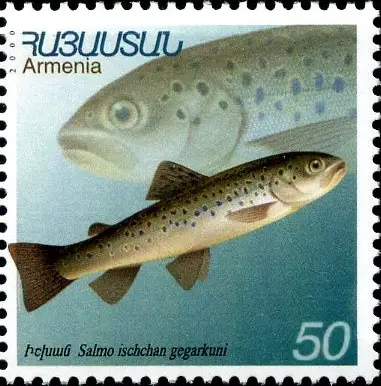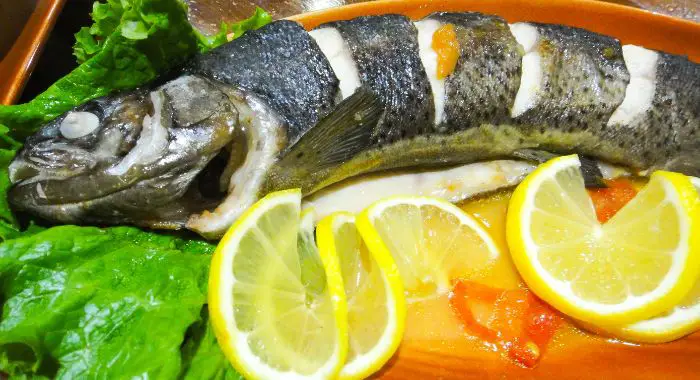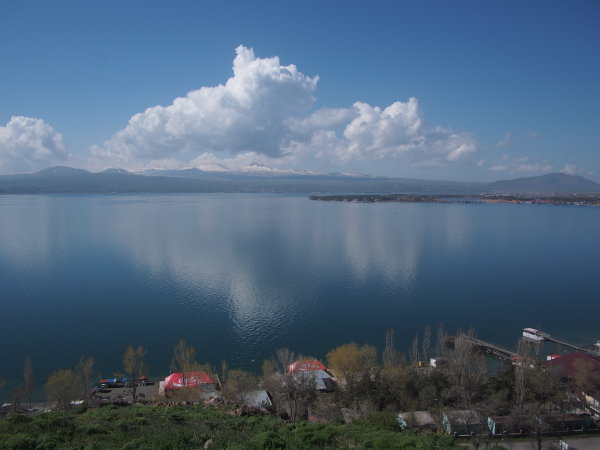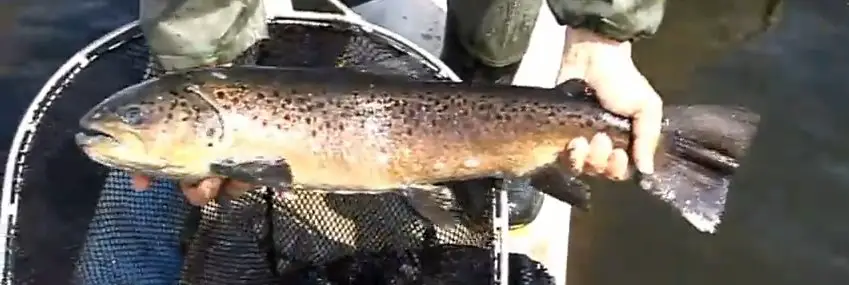This is a continuation of my series of articles discussing rare or less-known species of trout.
Today, I will like to discuss the Lake Sevan trout (Salmo ischchan) which is an endangered species of trout endemic to the landlocked, drainage basin of Lake Sevan, Armenia. The Sevan trout is a member of the brown trout species which includes up to 40 identified species.
The term endemic means that they only naturally occur within Lake Sevan, although they have been introduced into other lakes.
The numbers of Sevan trout in their home waters are low, and the Armenian government is involved in large-scale stocking of fingerling-size fish to try and boost the population. They have also invested in the construction of the Arpa-Sevan Tunnel which is designed to divert a portion of the flow from the Arpa and Yeghegis River flows to assist in restoring the lake to its original level.
I first become aware of the Lake Sevan trout during a tour I took while backpacking through Armenia. The minivan I was traveling in visited an ancient church, constructed on the shore of Lake Sevan, and while the church was interesting, it was the cold waters of Lake Sevan that caught my attention and I started to wonder if it contained any trout. I could see some very trouty-looking flats in the distance.
So, when I was back at my accommodation, I decided to do some research where I learned about the Lake Sevan trout. The next day, was the start of the 2018 Armenian revolution, and the city of Yerevan went into lockdown. This prevented me from returning to the lake, or any attempt to catch one. Although, I hold no grudge the reason for the revolution was much more important than some tourist’s fishing trip.
I also need to note fishing for Sevan trout in Armenia is illegal because they are considered to be an endangered species.
Anyway, I have blabbered on enough, let’s discuss the Sevan trout.
Names and variants
As I already mentioned in the introduction, in English they are called the Lake Sevan trout, or Sevan trout (Salmo ischchan). In this article, I am probably going to refer to them as the Sevan trout because it is shorter.
Historically, there were considered to be four variates or forms of Sevan trout. They were largely differentiated by their growth rate and spawning behavior. Out of the four original forms, two are now considered extinct.
More recent genetic analysis of their mitochondrial genome has also revealed that all four forms have identical mitogenome gene arrangements. So, they are genetically nearly identical to each other.
- Summer ishkhan (Salmo ischchan aestivalis) Average size form (<50cm), that naturally in rives and within the lake near river mouths
- Gegharquni (Salmo ischchan gegarkuni) Migratory form that only spawned in rivers.
- Winter ishkhan (Salmo ischchan ischchan) Largest form growing up to a meter in length. It was entirely lake dwelling. They use to spawn only in the littoral zone of the lake, it is now considered to be extinct
- Bojak (Salmo ischchan danilewskii) Is a dwarf lake-dwelling lacustrine form that spawned only in the littoral zone of the lake. It is now widely considered to be extinct. The Bojak form rarely exceeded 33cm in length.
Are Lake Sevan trout just brown trout?
This is an area of some controversy. The Sevan trout is phylogenetically very closely related to the Caspian trout. The Caspian trout itself is sometimes considered its own species, but other somewhat conservative taxonomists consider them to be just a sub-species of the common brown trout (Salmo trutta).
So the Sevan trout certainly belongs within the Brown trout species complex.
Unlike some other ‘rare’ European trout, such as the Garda trout, the Sevan trout is more closely related to brown trout than Atlantic salmon.
I also will note, due to mistakes made in stocking. Brown trout (Salmo trutta), Hybrid Sevan trout, and rainbow trout have all been mistakenly introduced into some of the tributaries of Lake Sevan. The long-term consequences of this introduction on the endemic Sevan trout are let to be seen.

So what makes the Sevan trout interesting?
Sevan trout historically grew to impressive sizes, with one fish over a meter long (39 inches) and weighing in excess of 16kg (35lb) being recorded.
Will, historically most Sevan trout were lake spawners. This lake spawning habit likely evolved due to the small size, and number of tributaries that feed into Lake Sevan.
Like most lakes, Sevan has one outlet, the Hrazdan. Although that too offers limited habitat for spawning due to an impassable 15-m waterfall located several kilometers downstream. Downstream migration to even this waterfall is now blocked by the construction of a large hydroelectric facility.
So, other than a few small tributaries, the Sevan trout natural range is largely isolated to the lake.
Due to habitat destruction, and water extraction for irrigation and hydroelectric power, the level of Lake Sevan was lowered dramatically destroying the shoreline most suitable for spawning. This led to the extinction of the two lacustrine forms.

Sevan trout spawn both in the fall and spring
Ask most trout fishermen when do brown trout spawn, and they will say in the fall or early winter.
Well, the Sevan trout have a different idea and their spawning period occurs throughout the year, but is largely concentrated in the fall and the spring.
The summer ishkhan subspecies spawns in the spring after the river temperature has reached 7.5c This occurs sometime between the months of May to June. While the Gegharquni sub-species spawn in the fall between October-November once water temperatures drop below 5.8c.
Spring spawning is very unusual among trout within the Brown trout species complex.
The extinct, lake spawning subspecies, also spawned at different times usually in the early winter (November till the end of December); the other spawned during the winter from mid-January till the end of march.
What do Sevan trout look like?
Sevan trout are silvery-white with a dark back. Compared with other brown trout forms they have fewer but larger spots. They are quite pretty fish.
Where Sevan trout found?
As already discussed, the endemic range of the Sevan trout is in Lake Sevan, Armenia, they also use several of the tributaries for spawning.
There is also a population in Lake Aknalich, Armenia but it is not self-sustaining and requires annual stockings to maintain the fishery.
The soviets also stocked Sevan trout into three central Asian countries starting with Kyrgyzstan in the 1930s then again in 1936. Later stockings also took place in Lake Balkhash, Kazakhstan (1971 and 1974), and Reservoir Charvak in Uzbekistan (1973-1983).
The stocking in Lake Balkhash, was apparently a failure, according to the FAO Fisheries and Aquaculture Department. 2016. Introduced Species Fact Sheets Sevan trout have become established in Uzbekistan but I could not find any more information on the Uzbeki population.
The most successful introduction was in Issky Kul Lake, Kyrgyzstan. I will cover this in more detail below.
Kyrgyzstan
The next chapter of the story of the Sevan trout continues in this little-known central Asian republic. Kyrgyzstan is best known for its stunning mountain terrain and its nomadic people.
If you are anything like me, you will not only struggle to pronounce Kyrgyzstan but even point it out on the map. I know it is located somewhere in central Asia. (It is squeezed between Kazakhstan to the north, China to the East, and a couple of other stans to the south and west)
Anyway, In 1930, and then again in 1936 the soviets successfully introduced Sevan trout to Issky Kul Lake in Krygestan where the population seems to be doing well with growth rates 4-6x greater than in Lake Sevan. Despite this success, annual stockings are still required to sustain numbers.
During the spawning period, Sevan trout do gather at all the appropriate river mouths. Nevertheless spawning success is low. Largely attributed to manmade barriers preventing upstream migration and poaching of trout from their redds.
There is also apparently a self-sustaining population in the Toktogu Reservoir, although it is difficult to find any precise information on it.
Summary
For more information about rare or unusual trout breeds, you might be interested in the following articles.
- Meet the Manchurian Trout (Lenok)
- Introducing the cherry trout (Masu salmon)
- Lake Ohrid brown trout – The most ancient brown and one of the biggest?.
- Introducing the Lake Grada trout- Maybe the strangest trout in the world


